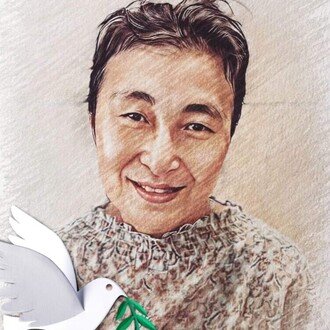
挨拶を広げる: カジュアルとビジネス会話における国際的な違い (パート2)
挨拶は簡単に見えるかもしれませんが、実は非常に多様で、場所によって異なる意味を持ちます。このシリーズの第二部では、前回紹介した挨拶をさらに広げ、オーストラリアとニュージーランドの表現も取り入れていきます。これらの国々に旅行する前に、これらの違いを理解しておくことで、カジュアルな会話やビジネスの場でも自然にコミュニケーションが取れるようになります。
カジュアルな挨拶
アメリカ英語: "What’s going on?"
イギリス英語: "What’s happening?"
オーストラリア英語: "G’day!"
ニュージーランド英語: "Kia ora!"
これらの挨拶はすべてカジュアルな場面で使用されますが、文化的な違いも反映しています。アメリカでは「What’s going on?」は非常にリラックスしたフレーズで、友達との間でよく使われます。一方、イギリスでは「What’s happening?」が似た表現ですが、少しフォーマルな場面でも使われることがあります。オーストラリアでは「G'day!」が代表的な挨拶で、ニュージーランドでは「Kia ora!」というマオリ語の挨拶が一般的です。
日本語の相当表現: "どうしたの?"
日本語では「どうしたの?」は少し直接的すぎるかもしれません。代わりに「元気?」という表現の方が自然に使えます。
ビジネスの挨拶
アメリカ英語: "How are you today?"
イギリス英語: "How do you do?"
オーストラリア英語: "How’s it going?"
ニュージーランド英語: "How are things?"
ビジネスの場では、フォーマルな挨拶が重要です。アメリカでは「How are you today?」が一般的で、イギリスでは「How do you do?」という表現が使われます。オーストラリアでは、ビジネスシーンでもカジュアルな「How’s it going?」がよく使われ、ニュージーランドでは「How are things?」が少しリラックスしたビジネス挨拶です。
日本語の相当表現: "ご機嫌いかがですか?"
フォーマルな日本語の挨拶としては「ご機嫌いかがですか?」がありますが、日常的にはあまり使われません。
フォーマルな別れの挨拶
アメリカ英語: "Please have a safe trip home."
イギリス英語: "Take care on your way back."
オーストラリア英語: "Drive safe, will you?"
ニュージーランド英語: "Mind yourself on the way home."
日本語の相当表現: "お気をつけてお帰りください。"
ビジネスの場では「お気をつけてお帰りください」は、相手の安全を気遣う丁寧な別れの挨拶です。英語でもビジネスの場では、似たような尊敬を示す表現が使われます。
別れの挨拶
アメリカ英語: "Take care!"
イギリス英語: "Cheers!"
オーストラリア英語: "Hooroo!"
ニュージーランド英語: "Catch ya later!"
別れの挨拶も大きく異なります。アメリカでは「Take care!」が温かく、プロフェッショナルな別れの言葉として使われますが、イギリスでは「Cheers!」が挨拶と別れの両方に使われます。オーストラリアでは「Hooroo!」がカジュアルな別れの言葉として使われ、ニュージーランドでは「Catch ya later!」が一般的です。
日本語の相当表現: "気をつけてね。"
日本では「気をつけてね。」がカジュアルでもビジネスでも使える別れの挨拶です。
文化的洞察: 「How are you?」の違い
英語を学ぶ日本人にとって最も大きなチャレンジの一つは、「How are you?」のカジュアルな性質を理解することです。日本では、人の健康状態を尋ねることは真剣な関心を示す時に限られますが、英語では「How are you?」は単なる挨拶であり、深刻な質問ではありません。返事も短く、定型的です。
アメリカ: "I’m good, thanks!"
イギリス: "Not too bad."
オーストラリア: "Yeah, good!"
ニュージーランド: "I’m alright."
日本語では「お元気ですか?」という表現が使われますが、英語のそれと比べてはるかにフォーマルです。
Expanding Greetings: Exploring Global Differences in Casual and Business Conversations (Part 2)
Greetings may seem simple, but they are incredibly diverse and carry different meanings depending on where you are. In this second part of our series, we’ll expand on the greetings we previously covered, adding in more examples and introducing expressions from Australia and New Zealand. Understanding these differences before traveling to these countries will help you communicate naturally, whether you're in a casual conversation or a formal business setting.
Casual Greetings
American: "What’s going on?"
British: "What’s happening?"
Australian: "G’day!"
New Zealand: "Kia ora!"
Each of these greetings can be used in casual settings, but they come with different cultural tones. In the US, "What’s going on?" is very relaxed and often used with friends. "What’s happening?" in the UK is similar but can also carry a slightly more formal tone in some regions. Australians love using "G'day!" which is their iconic way of saying hello, while in New Zealand, "Kia ora!" has a cultural significance, being a traditional Māori greeting.
Japanese Equivalent: "どうしたの?"
In Japanese, "どうしたの?" (What’s wrong?) might seem too direct compared to the more casual English greetings. You might use "元気?" (Are you well?) as a more natural equivalent.
Business Greetings
American: "How are you today?"
British: "How do you do?"
Australian: "How’s it going?"
New Zealand: "How are things?"
In business settings, formal greetings remain important, especially when you’re meeting new colleagues or clients. Americans often use "How are you today?" to keep things professional but friendly. British speakers lean towards "How do you do?" which sounds quite formal. In Australia, even business settings are often laid back, with "How’s it going?" serving as a polite but relaxed greeting. New Zealanders prefer "How are things?"—an informal, friendly, yet professional way to start a conversation.
Japanese Equivalent: "ご機嫌いかがですか?"
A formal Japanese greeting like "ご機嫌いかがですか?" would be a respectful business introduction, but much less common in daily Japanese.
Formal Farewells
American: "Please have a safe trip home."
British: "Take care on your way back."
Australian: "Drive safe, will you?"
New Zealand: "Mind yourself on the way home."
Japanese Equivalent: "お気をつけてお帰りください。"
In business settings, "お気をつけてお帰りください" is a polite, formal farewell, ensuring that the person has a safe journey home. This aligns well with more respectful English farewells in professional environments.
Farewells
American: "Take care!"
British: "Cheers!"
Australian: "Hooroo!"
New Zealand: "Catch ya later!"
Farewell expressions can also differ quite a bit. Americans will often say "Take care!" as a warm but professional sign-off, while Brits say "Cheers!"—which can be used for both greeting and goodbye. Australians might say "Hooroo!"—a cheerful, informal farewell—while New Zealanders commonly say "Catch ya later!"
Japanese Equivalent: "気をつけてね。"
In Japan, "気をつけてね。" (Take care) is the closest equivalent, and it’s a common farewell for both business and casual conversations.
Cultural Insight: "How are you?" – A Key Difference
One of the biggest challenges for Japanese learners of English is understanding the casual nature of "How are you?" in different English-speaking countries. Unlike Japan, where asking someone’s well-being is reserved for genuine concern, "How are you?" in English is often a polite gesture, not necessarily an inquiry. Responses are usually short and formulaic:
American: "I’m good, thanks!"
British: "Not too bad."
Australian: "Yeah, good!"
New Zealand: "I’m alright."
In Japan, you’d typically only ask "お元気ですか?" (Are you well?) if you’re genuinely concerned about someone’s health, making the phrase feel more formal than its English equivalents.
いいなと思ったら応援しよう!

